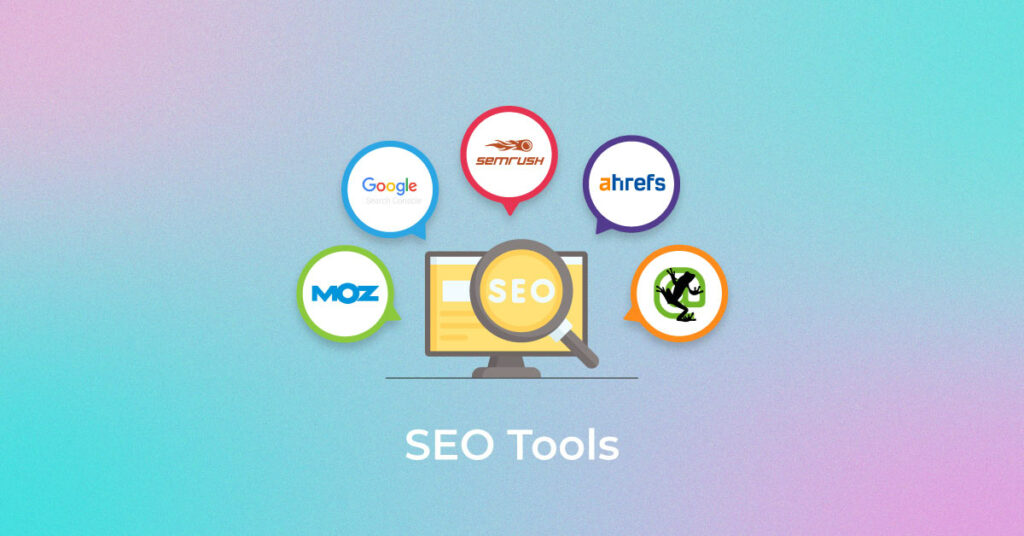SEARCH ENGINE OPTIMIZATION Vs. SEM: Understanding the Key Differences
On the planet of digital advertising, two crucial approaches that often show up are search engine optimization and SEM. While they may seem similar, they really offer different purposes and have distinctive strategies. SEARCH ENGINE OPTIMIZATION, which means Look Engine Optimization, concentrates on boosting an internet site's presence and natural ranking on online search engine results web pages. On the other hand, SEM, or Online Search Engine Advertising and marketing, entails paid advertising and marketing to raise an internet site's presence on search engines. Understanding the key distinctions between SEO and SEM is vital for organizations aiming to enhance their on the internet presence and drive website traffic to their internet sites. In this post, we will delve right into the definitions, objectives, and crucial elements of both search engine optimization and SEM, clarifying their distinct features and advantages.

Definition of SEO
SEO, or Look Engine Optimization, describes the technique of maximizing internet sites to boost their exposure and rankings on online search engine results pages (SERPs) It involves numerous strategies and methods focused on boosting organic, or non-paid, traffic to a website. The best objective of SEO is to enhance an internet site's on-line existence and attract even more targeted visitors.
One of the vital elements of SEO is keyword optimization (http://business.wapakdailynews.com/wapakdailynews/news/article/marketersmedia-2023-12-3-linkdaddy-announces-agency-backlink-local-business-directory-listings-service). This involves carrying out extensive research study to identify relevant keywords that customers are most likely to browse for when searching for information or items associated with a certain web site. By incorporating these search phrases purposefully into the internet site's material, meta tags, and URLs, search engine optimization aims to boost the site's importance and ranking for those specific search terms
One more important variable in SEO is on-page optimization. This entails enhancing numerous aspects on a website, such as title tags, headings, pictures, and inner links, to make them even more search engine-friendly (Linkdaddy). By making sure that these elements are appropriately structured and relevant to the web site's web content, SEO assists online search engine comprehend the context and importance of the site
Furthermore, search engine optimization likewise consists of off-page optimization strategies, such as link structure. This entails acquiring top notch back links from other credible websites, which suggests to browse engines that the website is trustworthy and authoritative. By building a strong network of backlinks, SEO enhances an internet site's reliability and improves its opportunities of rating greater in search engine result.
Definition of SEM
SEM, or Look Engine Advertising And Marketing, is a marketing method that includes advertising internet sites and increasing their visibility through paid marketing on online search engine results web pages (SERPs) Unlike search engine optimization, which concentrates on maximizing internet sites to boost natural search positions, SEM makes use of paid advertising and marketing to drive website traffic to an internet site.
One of the crucial elements of SEM is pay-per-click (PPC) advertising. When a customer searches for those search phrases, the advertisements appear at the leading or side of the search results.

Present ads are banners or aesthetic advertisements that appear on websites within the Google Show Network. Remarketing advertisements target individuals that have formerly gone to an internet site, serving them advertisements as they browse various other websites.
Objectives of Search Engine Optimization and SEM
The objectives of both seo (SEARCH ENGINE OPTIMIZATION) and online search engine advertising and marketing (SEM) focus on raising a site's presence and driving targeted traffic. Nevertheless, the strategies and techniques utilized by each vary considerably.
The major objective of SEO is to improve an internet site's natural search ranking on online search engine results web pages (SERPs) This is attained by maximizing various elements on the web site, such as web content, meta tags, and website framework, to make it more relevant and attractive to online search engine. By doing so, search engine optimization intends to bring in even more natural website traffic from users actively searching for related keyword phrases or topics.
On the other hand, SEM focuses on boosting a site's visibility through paid advertising on search engines. The primary objective of SEM is to drive targeted website traffic to a website by bidding process on keywords and displaying ads in internet search engine outcomes. This strategy permits businesses to get to a bigger target market swiftly and successfully.

Key Parts of SEO
To successfully apply search engine optimization, it is essential to comprehend the crucial parts that add to boosting a website's organic search ranking. These components can be broadly categorized into on-page elements and off-page elements.
On-page elements refer to the aspects that are directly existing on a web site and can be maximized for much better internet search engine presence. This consists of the web site's material, keyword phrase usage, meta tags, URL framework, web page titles, and headings. By enhancing these elements, search engines can better recognize the significance and context of the internet site's web content, leading to higher rankings.
Off-page variables, on the various other hand, focus on external signals that affect a web site's authority and integrity. This consists of back links from various other credible web sites, social media signals, and on-line points out (https://lifestyle.morningdispatcher.com/news/linkdaddy-announces-agency-backlink-local-business-directory-listings-service/458323). The more high-grade and relevant backlinks a web site has, the much better its opportunities of rating greater in internet search engine results web pages
In addition, customer experience is a vital part of search engine optimization. seo company. Browse engines prioritize sites that use a favorable individual experience, including fast loading times, mobile-friendliness, and easy navigating
Trick Parts of SEM
In contrast to SEO, SEM encompasses a distinct collection of crucial elements that concentrate on paid advertising and driving prompt presence in internet search engine results. These components consist of internet search engine marketing, also referred to as pay-per-click (PAY PER CLICK) marketing, keyword research, advertisement development, and campaign monitoring.
Online search engine advertising is a crucial part of SEM. When those keywords are looked, it involves bidding process on key words pertinent to your company and developing text or display screen ads that will certainly show up in search engine results. With online search engine advertising and marketing, you can target particular demographics, areas, and even time of day to reach your preferred target market.
Keyword research study is an additional vital element of SEM. It involves determining the search phrases that your target audience is utilizing to look for solutions or products similar to your own. By performing comprehensive keyword research study, you can maximize your ads and ensure they are revealed to the appropriate people at the best time.
Advertisement production is the process of creating influential and compelling ads that will lure customers to click them. Well-crafted ads have a strong call-to-action, appropriate messaging, and a clear worth suggestion.
Last but not least, campaign management involves tracking and enhancing your SEM projects to guarantee they are executing effectively. This includes tracking metrics such as click-through rates, conversion rates, and return on investment (ROI) to make data-driven decisions and attain the most effective results.
Final Thought
SEO concentrates on enhancing internet sites to boost natural search positions, while SEM entails paid advertising to increase visibility on search engine results pages. Understanding the differences between SEO and SEM is essential for companies to establish a detailed online advertising technique.
SEO, which stands for Browse Engine Optimization, focuses on improving a site's visibility and organic position on search engine results web pages. On the various other hand, SEM, or Browse Engine Advertising, involves paid advertising to increase a website's presence on search engines (seo company).SEO, or Search Engine Optimization, refers to the technique of maximizing web sites to improve their visibility and positions on search engine results pages (SERPs)The main objective of Search engine optimization is to enhance a website's natural search position on search engine results pages (SERPs) Search engine optimization focuses on optimizing internet sites to improve natural search rankings, while SEM involves paid advertising and marketing to boost visibility on search engine results web pages